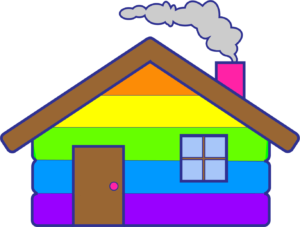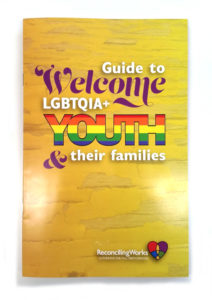Guide to Welcome LGBTQIA+ Youth
& their Families
New Resource for Youth Ministry Professionals and Lay Leaders!
Did you know that the average lesbian, gay, bisexual, transgender, queer, intersex, asexual person comes out at the age of 16? This means that there is a high chance that you will have an LGBTQIA+ youth in your congregation. Our new Guide to Welcome LGBTQIA+ Youth & Their Families will engage your faith community and equip it to provide helpful and appropriate care to LGBTQIA+ youth.
This resource is full of helpful information surrounding five specific areas of care for the LGBTQIA+ young people in your ministry setting. Each area of care includes questions for reflection as well as incremental steps to help create welcoming and hospitable spaces for LGBTQIA+ youth and their families.
The print version of this resources is available fore $2.00 from our eStore. Click here to purchase.
FIVE AREAS OF CARE TO CONSIDER
1. Registration Forms
Part of what it takes to feel welcome and safe is to be seen and understood. One easy way to help LGBTQIA+ youth and their families feel seen and understood is to make sure forms are inclusive and reflect their families. Allowing a youth to self-identify is holy. Small changes to forms can provide a tremendous amount of hospitality to youth and their families. Knowing more about your youth will give you and other adult leaders an opportunity to care for them in a more authentic way.


2. Restrooms
Transgender people who attempt to use public restrooms and other facilities are frequently subject to verbal harassment, physical and sexual assault, forcible removal, and sometimes arrest. Using public restrooms and other facilities can be an anxiety and fear-inducing action for members of the LGBTQIA+ community. Addressing this concern can be as simple as designating one or more single-stall bathrooms in your ministry setting as gender neutral and calling ahead to make sure that similar facilities will be available when your group is traveling.
3. Sleeping Arrangements
For a youth who is transgender, gender non-conforming, or gender non-binary, sleeping arrangements and accommodations are a factor in deciding whether or not to attend an event. It is important for a person's self-identified gender identity to factor into where they will sleep. If a student is out to their guardian/parent as transgender or gender non-conforming, talk with them and the youth about where they would feel most confortable and safe when it comes to sleeping arrangements.


4. Communication with Legal Guardian/Parent
It is important to be proactive rather than reactive when it comes to the safety and welcome of LGBTQIA+ youth. It is also important to connect with guardians about how and why you will be doing your best to ensure that their youth know they are seen, named, and cared for as a part of your community. This is a holy and important conversation to have with guardians. Being proactive and clear will help you have honest relationships with guardians and assure them that you have their youth's best interests in mind and are working to make sure all youth are safe and welcome.
5. Hospitable Space
Safety and welcome is not only something that is communicated with words, but it also is communicated through images and space. A well-placed rainbow flag and a posted welcome statement can make all the difference in creating a hospitable space. What visual cues can your ministry setting employ to not just tell, but also show LGBTQIA+ young people that they are a welcome part of your community?


